Ever since its initial launch in the 19th century, a farm tractor has remained one of the most necessary pieces of farming equipment.
Thanks to the years of innovation and development, agricultural tractors have saved millions of farmers from manual labor and enabled efficient farming productivity.
So, what is a tractor?
The term tractor was derived from a Latin word trahere which translates ”to pull”.
A tractor is mainly used in farms to pull various agricultural implements.
Thanks to the tractor’s high torque operation at low speeds, machinery or trailers can be mounted to it to perform multiple farming tasks.
Such include harrowing, plowing, tilling, planting, cultivating, and fertilizing the land.
Whether you are an expert farmer or just an agricultural enthusiast looking to find out more about what tractors are used for, we will discuss all the ways this innovative machinery has changed agriculture for the better.
Table of Contents
How & when were tractors invented?
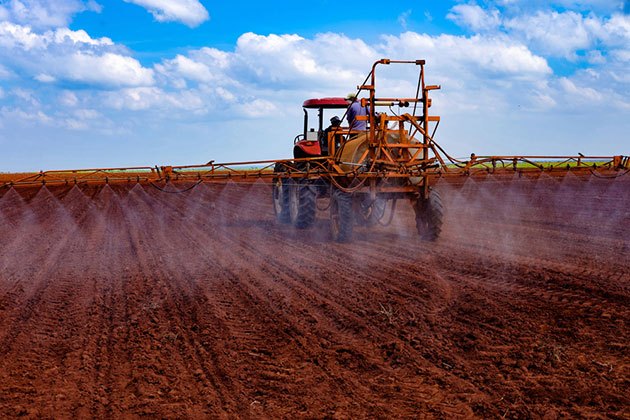
Before the first gasoline-powered tractor was invented, farmers could use one of the two options available for their farming tasks.
They could either use draft animals or steam engines.
Besides using their physical strength, farmers needed the biggest power supply for plowing.
In the early 1870s, the first steam tractor engine was invented.
However, as much as it helped reduce the requirement of manual labor, they were also a safety hazard.
The agricultural machinery was under constant danger of exploding and had difficulty moving around obstacles.
It wasn’t until 1892 that John Froelich invented the first gas-powered tractor.
The first patent design could be driven both forward and backward.
Froelich was familiar with the previously used steam tractors, which presented a constant threat to the field.
They were hard to maneuver and difficult to work with, so he decided to invent mechanical farm machinery that would work much better and smarter.
Gasoline was a clear answer to his prayers!
He created a hybrid machine that used the design of the steam engine and its running gear but included a one-cylinder engine.
After his first model showed potential, John and a group of businessmen founded a Waterloo company to develop models based on his patent.
The company, Waterloo Gasoline Traction Engine Co, delivered a few unsuccessful models from the start, which caused a setback for the entire crew.
Disappointed, John left the company and started his endeavor in 1912.
He took the name of John Deere and began the Deere & Co, which had taken the tractor marked by a storm!
In 1914, the company launched the first Waterloo Boy Tractor.
The model was named R, and it was a single-speed tractor that had reached impressive sales in less than a year of its initial launch.
By the time the model N arrived and introduced a two-speed motor, the company had gained global success.
The rest is, how they say, history.
Other manufacturers joined in and produced their models to offer more farming productivity.
As the market grew, so did the initial tractor design. Nowadays, modern tractors are much lighter and easier to work with, saving farmers from manual labor.
They are essential to every farm and initially have saved millions of farming hands by increasing agricultural labor productivity.
Modern tractor brands we use today were mainly inspired by none other than Henry Ford.
How do tractors work?
Have you ever found yourself driving behind a tractor? I bet you did, and you thought who in the world would want to drive that thing?
But, little is known that tractors are one of the most mighty vehicles there are!
Don’t let the slow-moving fool you.
However, did you even think about what’s hiding behind the tractor production and what makes them powerful?
Let’s take a closer look at how tractors work.
Like bulldozers, railroad trains, or ships, tractors are constructed with reliable internal combustion engines and diesel engines.
Now, theoretically, because they have diesel engines, that should mean they can move faster than usual?
Well, that’s not the case with tractors.
You see, they are meant for pulling heavy loads, and there is no safer way than doing so slowly.
The tractor’s gearbox makes it possible for the tractor to move slowly with a high-torque engine.
With a tractor, a gearbox is designed to convert the high-speed revolution of the engine into the lower-speed revolutions of the wheels.
So, what does it signify when you see a tractor moving quicker than usual?
Chances are it’s not carrying a heavyweight because its gearbox is not sending immersive power to the wheels required for the heavy load.
Pull & power action of farm tractors
As it is derived from the Latin word trahere, which means “to pull,” we should discuss all the ways a tractor can pull the implement used for agriculture and power it.
An agricultural tractor can power/pull the implements in three ways: by a hitch, with a drawbar, or a mechanized driveshaft, otherwise known as a PTO shaft.
1. Hitch
Usually referred to as a three-point hitch, it offers numerous advantages.
Consider a drawback as a simple method of pulling, whereas a three-point hitch is an upgraded and safer method.
This is because it secures the implementation in three different places-hence the three-point hitch name.
It has a central link at the top and two hydraulic-powered arms that connect on both sides of the implement.
They make it manageable for the tractor to lift and lower the tool, such as the plow.
It has three-way security, preventing the implementation from sliding or wobbling when carrying heavyweight.
It’s also quite versatile as almost all tractors can use the three-point hitch with numerous implements, so compatibility should not worry you.
2. Drawbar
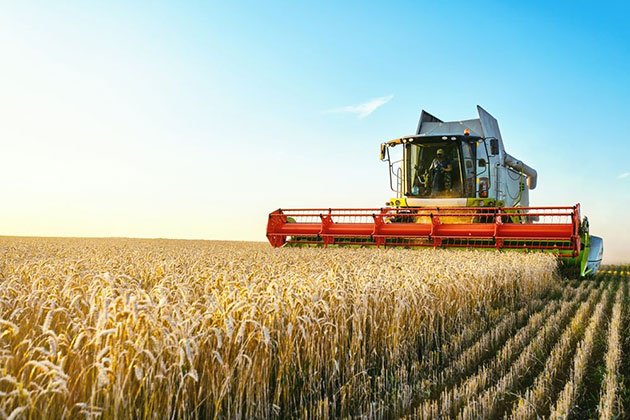
A drawbar is most commonly used with trailers, wagons, rail transports, or any kind of agricultural implement that does not require a power lift.
For instance, thanks to the drawbar pin, you can attach a trailer but still have flexibility.
Flexibility is crucial if you plan on driving the tractor with a tailor in the city for transportation. It makes it possible to turn around corners and obstacles, but it can be challenging.
A drawbar is used to attach a three-point hitch to the farming tractor; however, you can remove the drawbar entirely if you wish to use only a hitch.
3. Power-take off
Lastly, we have the power-take-off. Almost all tractors nowadays include a PTO shaft used for powering implements.
The rotating power take-off shaft is located on the back of the tractor and used for transferring mechanical power between the implements and the tractor.
Again, don’t confuse this with pulling; it’s only for delivering power to start the desired implementation.
Therefore, if you plan on using the PTO shaft, you should still secure the implement with the drawbar or a hitch.
You can start by hooking the implement with the tractor by using a special spinning rod with universal joints.
For instance, if you plan to hook a hay baler, you will need to activate its spinning rakes. This is where the PTO shaft transfers the power of the vehicle engine.
However, PTO shafts are pretty risky and could potentially be life-threatening if not handled with care.
Because they rotate at high-speed, you should be careful not to approach them when wearing loose clothing.
You can easily get entangled, and the results could be fatal.
Benefits of using a tractor in agriculture
As an integral part of the agriculture industry, a tractor is used for performing a variety of farming tasks.
Modern tractors of today are capable of performing more than some may think. Farmers use them for transporting, lawn care, or overall landscape maintenance.
When choosing a tractor, you need to consider investing more if you want a bigger payoff.
However, many farmers with small lands question whether buying a tractor is even necessary for them?
So let’s cover some of the benefits and discuss what tractors do in agriculture.
1. Versatility
Are you just starting up with your farming business? Your most significant investment should be a tractor.
Think about it.
The tractor unit can perform various tasks and allows for the attachment of different implements so that you will be saving on further purchases.
For example, you don’t have to buy separate equipment when attaching a post hole digger, backhoe loaders, or rotary tiller.
2. Robust & durable
Thanks to their durability and engine power, you can always rely on a tractor to perform in even the most challenging conditions.
Modern tractors are developed with a high-torque motor, so they can efficiently get the job done, no matter how hard it may look.
As a result, a tractor is a farmer’s best friend, from pulling heavy loads to riding over rough terrain.
An agricultural tractor is equipped with an automatic transmission system which allows for quicker and more precise operations.
Alarmingly, they can also be a safety hazard for many tractors.
Luckily, tractor-related injuries can be reduced with newer models that can decrease the fatigue of automatic responsive transmission.
In addition, it can handle sudden power loads while operating on application-based shifting, thus keeping the driver safer.
3. Efficiency & money-saving
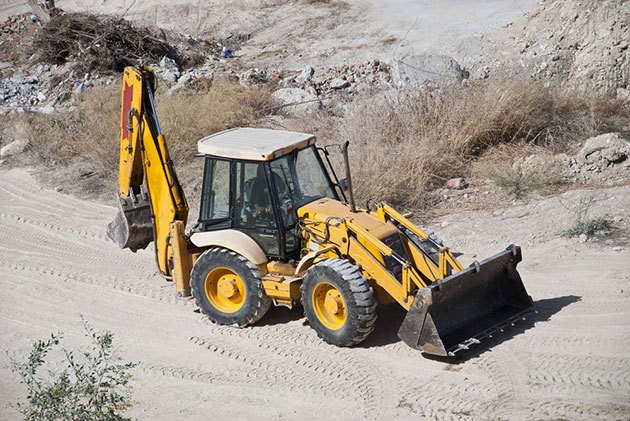
As tractors were invented to reduce manual labor, you can only imagine accomplishing a farming task quicker than usual.
In the long run, tractors can help you reduce production costs compared to the physical labor cost.
Plus, you will be covering more land during the harvest than you would manually and not spend so many hours in the scorching sun.
Disadvantages of using a tractor
Farm or industrial tractors have numerous advantages to them. However, they also carry a negative side.
For instance, a modern tractor runs on gasoline which causes air pollution.
In addition, it uses fuel, so you also have to think about the financial maintenance even of the classic farm tractor.
Fuel used for tractors includes diesel, gasoline, kerosene, or L.P. gas.
If the wrong size tires are used, or the field condition is not well, tractors could lead to soil compaction.
If not operated by an experienced or trained driver, they can lead to fatal injuries.
However, because tractors are more beneficial for the agricultural industry than draft animals, it’s safe to say they offer more advantages than disadvantages.
Safe uses of tractor
According to the NSC (National Safety Council), tractor-related injuries account for most deaths among farmers.
The U.S. Department Of Labor reports that less than half of the accidents occur due to tractor rollovers.
Thankfully, many newer and modern tractors have a roll ROPS system that protects against rollover. But, it’s the older models that cause fatal injuries.
So, nowadays, if manufacturers want to sell a tractor within the U.S., they must include seat belts, guard rails, internal warning systems, and ROPS.
Some of the most common accidents while operating tractors include rollover, entanglement, tipping, safety issues in the manufacturer of tractors, and collisions.
This leads us to ask, “how can one operate a tractor safely“?
Tractors are never entirely safe to use; however, if you follow a few guidelines, you can reduce or altogether avoid the possibility of common injuries.
Only a person who is fully trained or experienced can operate a tractor. Remember to always wear your seat belt and never transport passengers without one.
Ensure all the power-take-off shafts are guarded and don’t start the tractor off the ground. Do not jump on and off of the working tractor.
Early tractors did not include control engine speed, but the new ones do.
With the assistance of the bottom foot pedal, you can safely operate your vehicle.
Remember to use power-assisted steering and braking when carrying a heavy load.
Tractor drivers often drive over rough terrain, so rollovers are an immense risk. To avoid tractor overturns, avoid going too close to the edge of a bank or too fast.
What is a tractor used for in agriculture?
We mentioned that tractors could cover a variety of tasks, but let’s dig a little deeper into the subject.
What does a tractor do in agriculture? Can you use it outside of the farm and in inclement weather?
These are some of the commonly used attachments with full-sized agricultural tractors and the tasks they can perform.
You would be surprised at just how versatile this vehicle is.
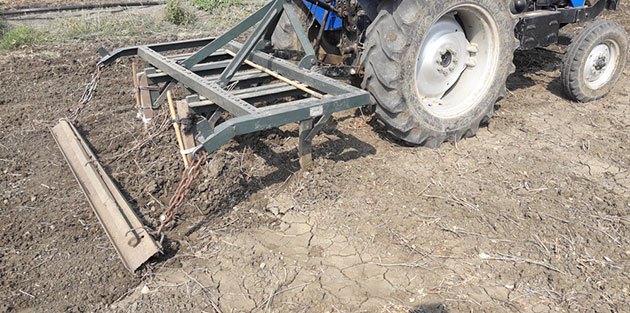
1. Plowing the land
Farm tractors can be used for one of the most basic farming practice-plowing. Although they seem high and mighty, tractors are easy to work with.
A tractor is your best option if you want to plow the soil with minimal physical effort. You need to power them on and go over the desired part of the soil that needs to turn up.
A plow is made out of steel framing with a blade to loosen and break the soil. It’s a standard method of turning the soil over before planting the seeds.
By breaking the soil, you initially remove clods from it, create furrows, and prepare the ground for the next crop.
If you wonder how much land a tractor can plow during a day, we have to say that it all comes down to the size and the power efficiency of a tractor.
Regular farm tractors or even a garden tractor of 10 horsepower can plow up to 8 archers a day.
If you own a compact utility tractor with high power, chances are you can get twice as much job done!
Overall, it produces high-quality soil, which will deliver better quality yields. For a quality harvest, a tractor can loosen the soil better than manual labor.
2. Create a clean slate
By attaching a trailer to the truck, you can use it for easier transportation.
For example, many farmers use a trailer as an attachment to transport soil, fertilizer, bricks, or wood.
If you have an area in your farm that needs detailed clean-up from trees, bushes, weeds, or rocks, you will need a tractor to move them away.
However, for taking care of the unnecessary load, you will need to attach a specific implementation to your farm vehicle.
One of the best options is to mount a brush puller. It quickly takes out the stubborn weeds bushes by the roots.
3. Cultivating the land
For crops plantation, you will need to prepare the soil as best as possible. This includes plowing, disking, planting, and harrowing.
Cultivating the soil will allow for the air to penetrate better and provide optimal passage for other nutrients and water to the roots.
Doing manual work on a large field can be exhausting and time-consuming. You can cultivate the soil better and more efficiently with a good farm tractor.
However, you will need a few implements for starters, such as disks, plows, cultivators, or soil spreaders.
It’s also important not to disturb other plants while cultivating the surrounding soil.
4. Brush hogging
As we are on the topic of giving your little farm a clean slate, have you thought about using a brush hog?
It’s also known as a rotary cutter, and it’s superb in clearing all the weeds and unwanted bushes.
Although it’s mostly used with smaller lawn tractors, larger agricultural tractors can also endeavor on this task.
A rotary cutter is attached to the back of the garden tractor and has a dull blade.
Don’t be confused into thinking it won’t be as efficient as a sharp one. Remember, it still needs to handle the dense weeds.
For smaller areas, you can get a 6-feet wide brush hog.
Taking out the weeds is not just for aesthetic reasons. It also helps with pasture and trail care and prevents the overgrowth of trees.
5. Mowing the grass
Lawn tractors are one of the most used models for routine farm maintenance.
For this, you can either use sub-compact tractors or regular mini tractors that are used primarily for home purposes.
Most lawn tractors will require a mowing implement that is easily attached to the vehicle.
If you have a small farm, it’s best to use small cut mowers that don’t exceed 72” of cutting height.
Remember, the bigger the tractor, the more impact it will have on the soil, so it’s essential to choose the right type of tractor and cut height.
For thick and tall grass, you can use rotary cutters. A tractor pulling a cutter will allow for quicker lawn maintenance.
6. Pesticide application
When choosing a pesticide, you have to be careful not only about the product but also about the method and equipment for spraying.
It should be properly selected to reach the area at the proper rate and offer sufficient coverage.
This can be done manually. However, it’s practically impossible to spray the field by hand if you have a big farm.
So, your next option is to use a tractor! You can use aerosol cans, electric-driven pumps, pump-up sprayers, or power-driven sprayers for the application equipment.
The application volume is determined based on the area size you want to cover. Sprayers’ capacity can range up to 1,000 gallons when pulled behind a tractor.
Of course, if you choose a bigger tank, it will not require refits that often. However, you will need a bigger tractor to pull the sprayer throughout the field.
7. PTO farm irrigation
Proper water irrigation is a necessity for a farming field.
PTO farm irrigation systems are easy to use and offer great coverage for the area as they are extremely powerful.
In addition, you can get portable PTO pumps that are attached to the back of the tractor and can be easily refiled.
Once the suction hose is attached to the water supply and the PTO shaft is activated, the irrigation will have enough power to supply the necessary water for the soil.
However, some areas and fields do not use drip irrigation, so you can use a water bowser in this case.
It’s also attached to the back of the tractor and helps with the irrigation process.
8. Harvesting
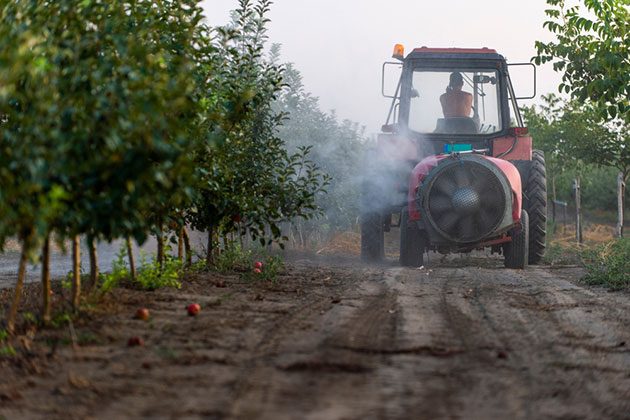
One of the most common uses of a farm tractor is harvesting crops. Here, you can use many implements to collect vegetables, oats, or nuts.
For example, you can use a swather to cut crops in rows or “swaths.”
This tool is a combination of a rake and a mowing machine, so it’s used to harvest small grains and collect them into a windrow.
The implement is commonly used for collecting hay as it lays it in rows for the baler. It cuts the time short when you need to create a thick bale!
Additionally, another common implement for harvesting is a combine.
It attaches to the compact tractors and picks up the crops while separating seeds from waste.
Finally, you will need a potato digger, tree shakers, or rakes for harvesting vegetables.
9. Transportation
We talked about how tractors can be used for transporting a variety of agricultural goods.
For example, with the right size tractor and implements, you can carry hay, grain, or even move hay bales to the desired spot on the farm.
Also, if you want to plant and harvest your hay, you will need a farm tractor that can handle raking, mowing, or baling the hay into rounds.
Farmers who take care of their livestock will also use tractors to transport injured animals.
This is where the front-end loader of your tractor comes in useful.
For instance, if you have a sickly or downed cow, you need to handle it with care and precaution.
The best method is by gently placing the cow in a tractor with a loading bucket large enough to support the animal.
10. Snow removal
Although it’s not specifically for agricultural purposes, you have to agree there can always be a possibility of a snowstorm.
And what can help you with getting your car out of the ditch or removing the snow?
That’s right, a tractor!
Nowadays, tractors feature an enclosed cab which can be used for implementing mounting but for snow removal as well.
Here, you can even use your smaller lawn mower tractors as they can clear up the snow in no time!
The rear-angled blade also works for clearing the driveways and transporting lighter materials.
Types of tractors
An agricultural tractor is not a budget-friendly investment, but it is one of the most necessary pieces of farming equipment.
As it can perform various tasks, it’s crucial to comprehend all the different types of tractors you can choose from and the effect you want to achieve.
1. Compact utility tractors
A compact utility tractor is one of the most used tractors for farming. As their name suggests, they are high-powered but compact vehicles.
Agricultural workers that cannot afford a specific type of equipment for plowing or sowing will benefit the most from a compact utility tractor.
They use low or medium-powered engines that are mainly used for pulling auxiliary equipment such as harvesters, hay cutters, tillers and even serve for landscaping or snow removal.
As compact utility tractors are the most basic type, they allow for lots of other powered farm implements to be mounted on them.
2. Row-crop tractors
Row-crop tractors are one of the most mighty farm equipment machines there are! There is not a single obstacle these bad boys have not surpassed.
As one of the biggest benefits, we take that the classic row crop tractor can work in all weather conditions, which lots of tractors struggle with.
They deliver incredible performance in all conditions and can be used for numerous agricultural tasks. Such include plowing, harrowing, pulling seed drills, or weed control.
With great power comes great responsibility, so many of the farmers will be glad to know that these tractors carry many benefits.
As they are packed with power, row crop tractors are beneficial for better ground clearance capability, optimal row spacing, and have quick action functions.
3. Garden tractors
Garden tractors are significantly smaller than utility tractors or industrial tractors. Therefore, they are used explicitly for smaller farming tasks such as lawn maintenance.
However, don’t be fooled into thinking they cannot be used for various tasks.
Garden tractors can also be used as lawn tractors with the attachments of sweepers, sprayers, or even plug aerators. They possess a powerful motor of between 1HP to 20HPs.
Overall, if you don’t have a lot of land to cover, you can use garden tractors to complete some of the most basic tasks.
4. Orchard tractors
Orchard tractors serve for what the name suggests.
They have a tall construction, so the farmer can easily pick the fruit in orchards and vineyards.
5. Rotary tillers
These tractors are known as “walking” units and are mainly used in smaller and narrower fields. Essentially, rotary tillers are motorized cultivators that work by rotating the blades.
Rotary tillers are used for breaking the clods on the soil and preparing the soil for further plantation.
FAQ’s
Where is the tractor mostly used?
The tractor is mostly used on farms.
It is a necessary engineering high-torque vehicle that offers machine power for performing various agricultural tasks.
Because of their versatility, tractors are essential for every farm and completion of plowing, planting, tilling, and harvesting tasks.
Nowadays, farm tractors are used to pull agricultural implements mounted on the back of the vehicle.
However, there are many earth-moving tractors used in the construction industry that use backhoe loaders, excavators, crawler tractors (also known as bulldozers).
Why is a tractor important?
Tractors are necessary for farming tasks and offer power to drive mechanical farm machinery.
Not only are they essential for landscape maintenance, but they can also help you with transportation and hauling of different materials.
They cover a variety of farming tasks as they provide power for pulling implements required for cultivating, plowing, digging holes, harvesting, etc.
Due to their development in the 19th century, millions of farmers were saved from manual labor as tractors were doing most of the physical work.
Tractors are important if you wish to cover more land in little time as they are efficient and maneuverable.
How did the tractor improve agriculture?

Before tractors were developed and improved, farmers would have to work the entire field manually.
This did entail not only a lot of time but also physical strength.
Now that tractors are necessary for every farm, they make it possible for the farmers to cover more land with less effort.
They are several types of tractors, and you can choose the one that would work the best for the specific farming task.
They improved agriculture by allowing farmers greater agricultural productivity.
How do farmers use tractors?
Farmers mostly use tractors to attach agricultural implements to complete plowing, harrowing, sowing, cultivating, or planting.
Utility tractors are used for pulling those machines and allow farmers to efficiently get the job done without purchasing a separate machine for a specific task.
Based on the type of agricultural task, various types of implements can be mounted on the back or the front side of the tractor.
Final words
In general, a farming tractor can go a long way in helping with the agricultural process and production.
We discussed what is a tractor and what do tractors do for agriculture and their benefits.
They are versatile and beneficial vehicles that have become a best friend to a farmer.
The advantage of performing farming tasks efficiently and cutting expenses on farming equipment is priceless!
When buying a tractor, many farmers may be tempted by the budget prices of older models. But, we would advise you to consider the primary use of your tractor?
Is it simply plowing the land, or will you need to carry a bulky load and spread the seeds?
Not all models are the same, so choose wisely.
Nonetheless, their reliability and high maneuvering will make them your smartest farming investment.
